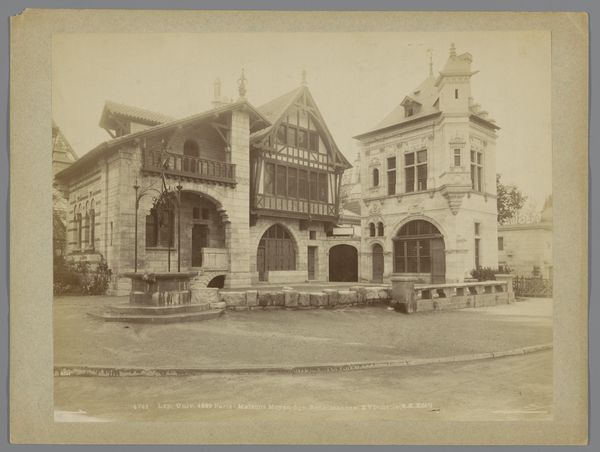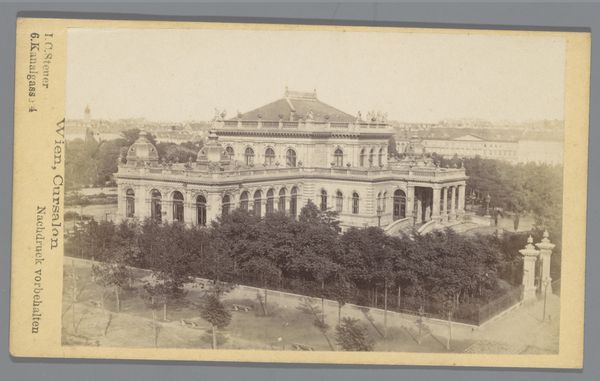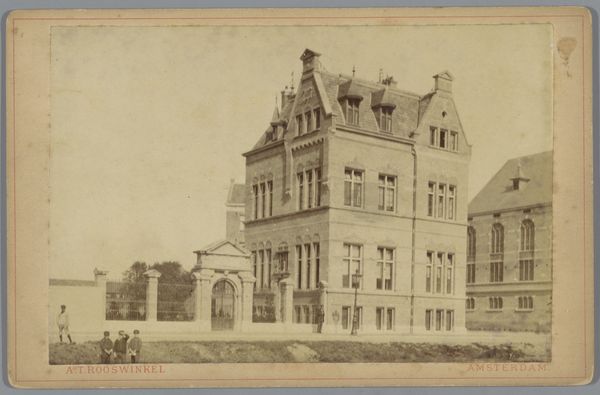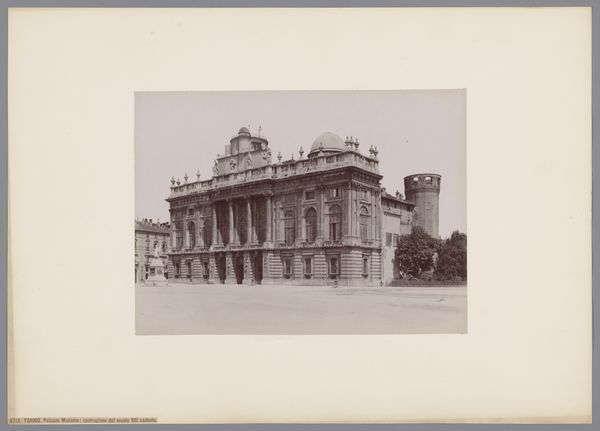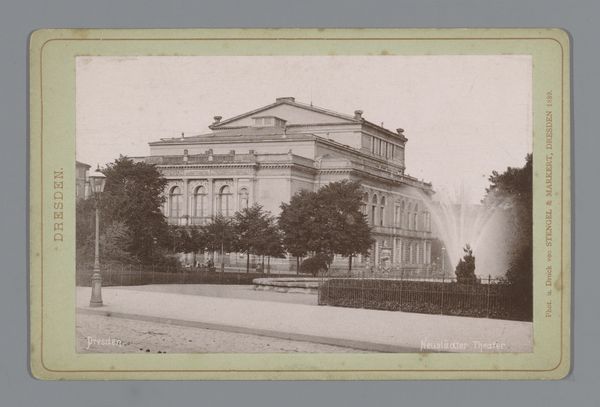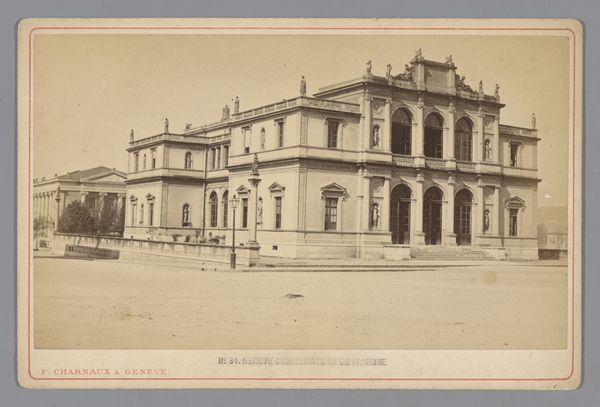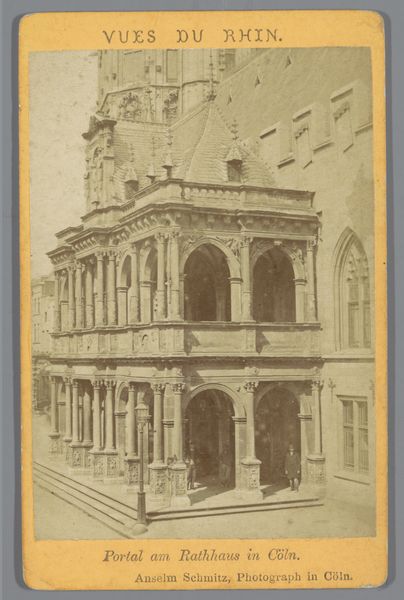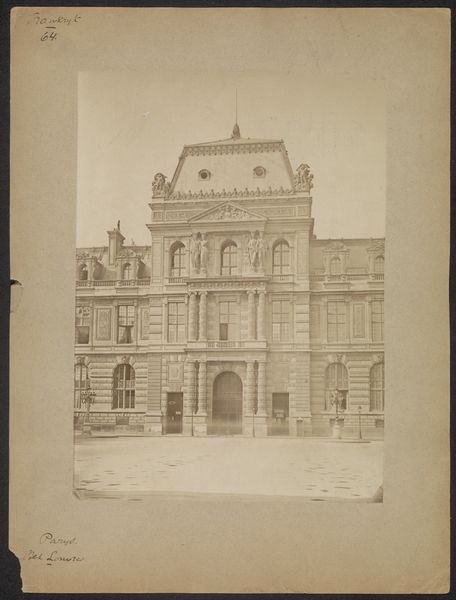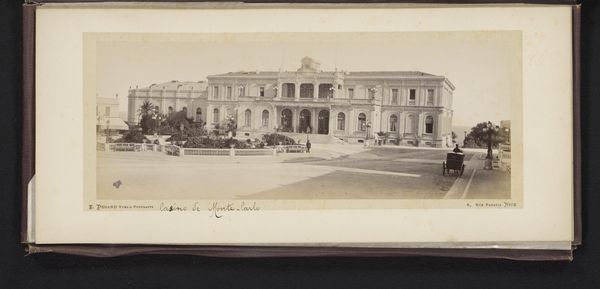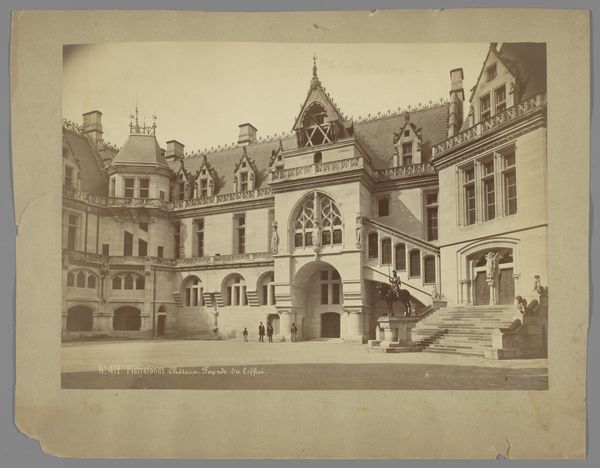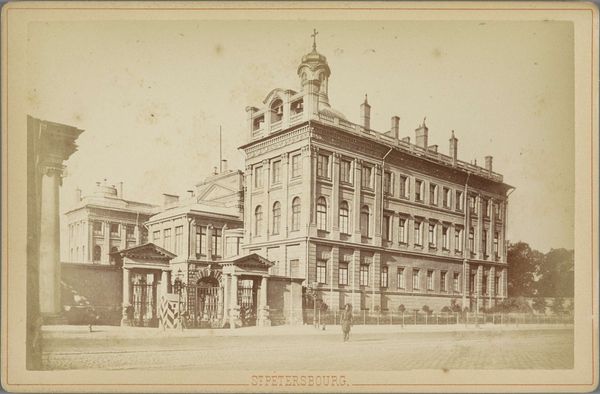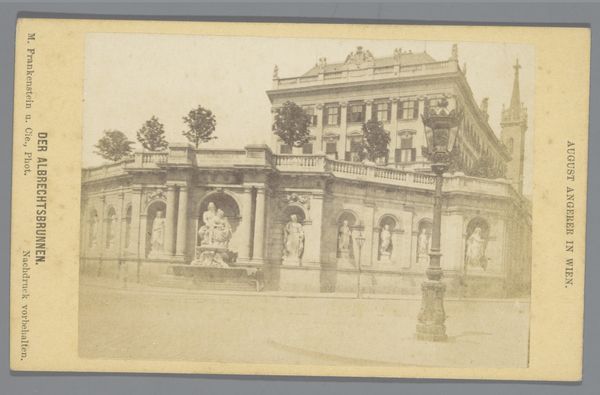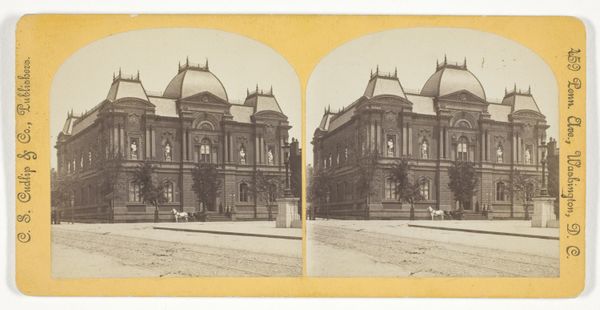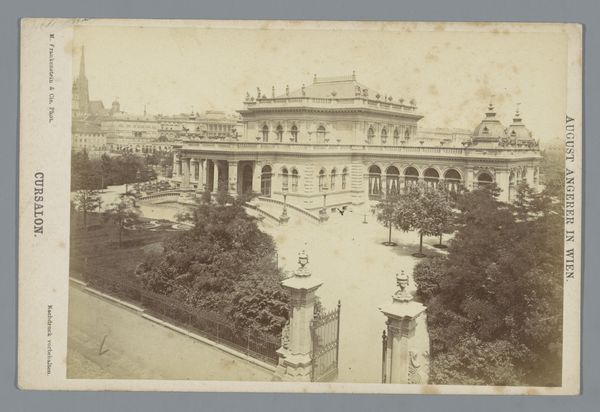
Gezicht op een stadsvilla, vermoedelijk in de omgeving van Groningen 1858 - 1903
0:00
0:00
photography, albumen-print
#
16_19th-century
#
photography
#
coloured pencil
#
19th century
#
cityscape
#
albumen-print
#
realism
Dimensions: height 108 mm, width 165 mm
Copyright: Rijks Museum: Open Domain
Editor: This albumen print by Johannes Gerardus Kramer, titled 'View of a City Villa, probably near Groningen', was made sometime between 1858 and 1903. I find its architectural details quite fascinating, a window into the past... How do you read this image? Curator: The villa immediately evokes a sense of bourgeois aspiration, doesn't it? Consider the meticulous arrangement of the garden juxtaposed with the solid, almost imposing façade of the house. The photographer, perhaps intentionally, captures not just a building, but a symbol of permanence and established social order. Do you see other indicators of stability and status? Editor: I do. The symmetry in the window placement and those classical decorative elements on the roof also give the impression of wealth. The shadows seem to add a certain gravity. What do you think this place symbolized at the time for Groningen, assuming that it's actually there? Curator: Think about Groningen in the late 19th century. This image speaks to the burgeoning wealth in that period, a visual assertion of upward mobility and confidence in the future. The villa, as a signifier, broadcasts the inhabitants' cultivated taste and financial prowess. What kind of memory do you think an image like this was designed to conjure? Editor: Probably an idealized version of their present, and perhaps to project that image for posterity? Something impressive that transcends generations... Thank you! That makes me see this photograph, and the building itself, in a totally different way. Curator: And that’s the magic, isn't it? Every photographic image of this nature creates its own version of continuity across generations and serves as both an idealization and a record of cultural aspiration.
Comments
No comments
Be the first to comment and join the conversation on the ultimate creative platform.
